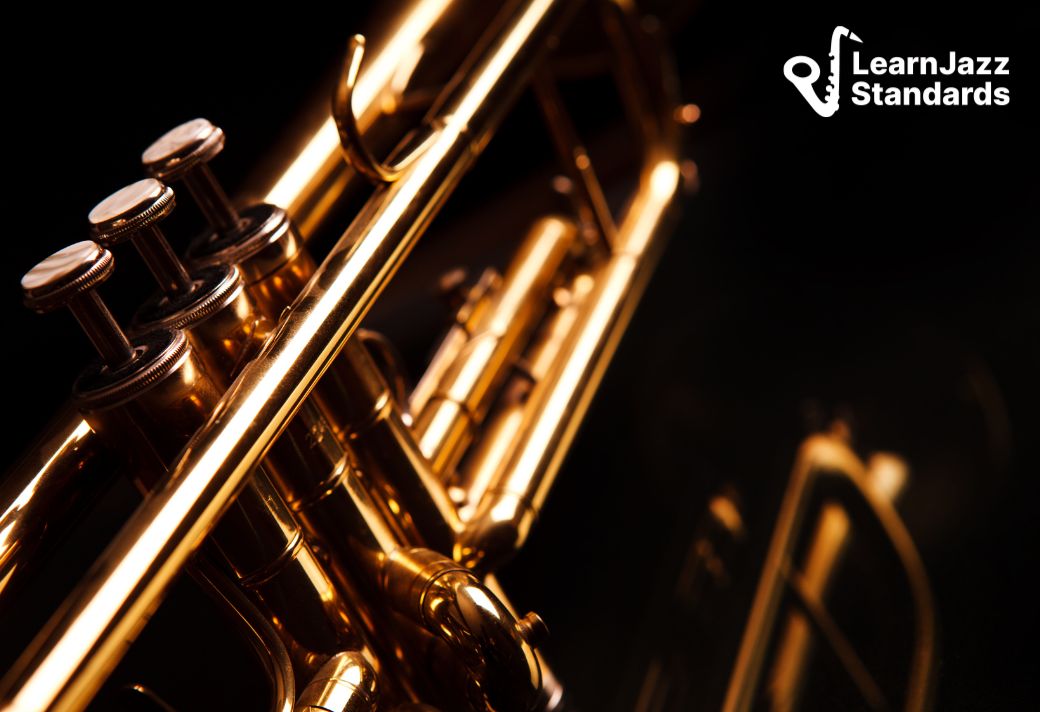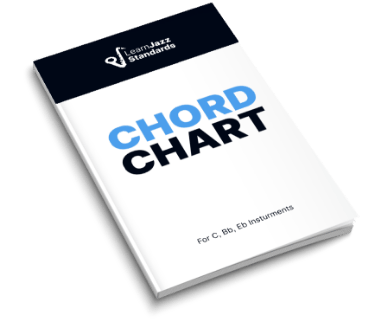“Blue Bossa” is an important jazz standard and a quintessential milestone for any musician interested in learning to play jazz. Equal parts bossa nova and hard bop, Blue Bossa comes from an era of jazz that sought after new sounds and ideas to bring into the tradition.
In this article, we’ll learn how to play the chords of this timeless jazz classic. We’ll also learn about this tune’s history and discover why it’s such an important jazz standard.
If you love learning jazz songs and want to play jazz better, check out the Learn Jazz Standards Inner Circle. We have all the resources and motivation you need to take your jazz chops to the next level.
Improve in 30 days or less. Join the Inner Circle.
Table of Contents
Blue Bossa: A Brief History and Its Importance Today For Jazz Students
Kenny Dorham wrote “Blue Bossa” for Joe Henderson’s debut album, Page One, released in 1963. This groundbreaking hard-bop release makes our best jazz albums list. “Blue Bossa,” its first track, would become a beloved jazz standard and jam session classic.
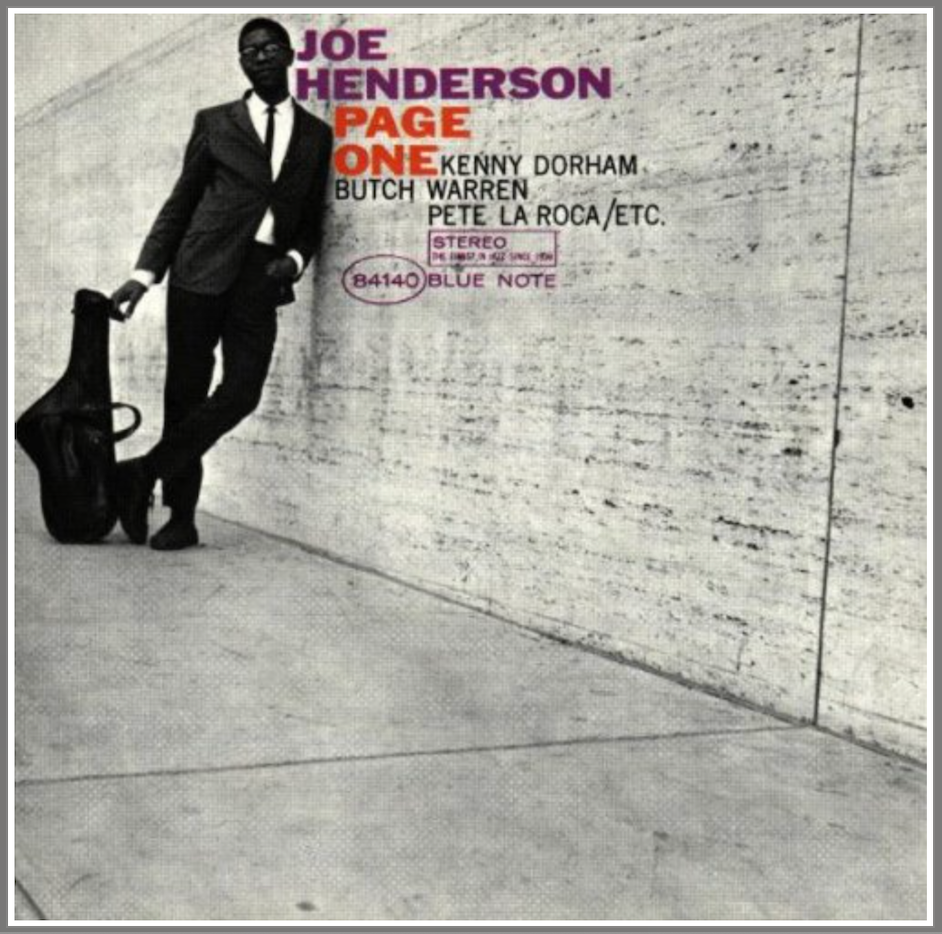
image source: Wikipedia
The Joe Henderson version features Kenny Dorham on trumpet, McCoy Tyner on piano, bass guitar player Butch Warren, and drummer Pete La Roca. The original version was played as a medium-tempo Bossa Nova, which is a fusion of samba and hard-bop elements.
Check out the original performance here:
However, there have been many, many other versions recorded by various artists over the years. Check out this article to learn more about bossa nova music and bossa nova chord progressions.
In today’s jazz world, “Blue Bossa” sometimes gets vibed by certain jazz musicians. It is a jam session classic because it is relatively simple harmonically, and its melody isn’t terribly complicated either, meaning many people know it or could hear their way through it.
Regardless of what some jazz musicians might think, this song is an incredible composition and has spawned many incredible covers by world-class jazz musicians. I remember the first time I heard jazz guitarist Pat Martino’s version and it blew my mind!
However, Blue Bossa’s real importance is that it showcases very common jazz chord progressions that every jazz student needs to learn, so it’s a great practice tune to improvise over.
BEFORE YOU CONTINUE...
If you struggle to learn jazz standards by ear, memorize them, and not get lost in the song form, then our free guide will completely change the way you learn tunes forever.

Blue Bossa Chords And Analysis
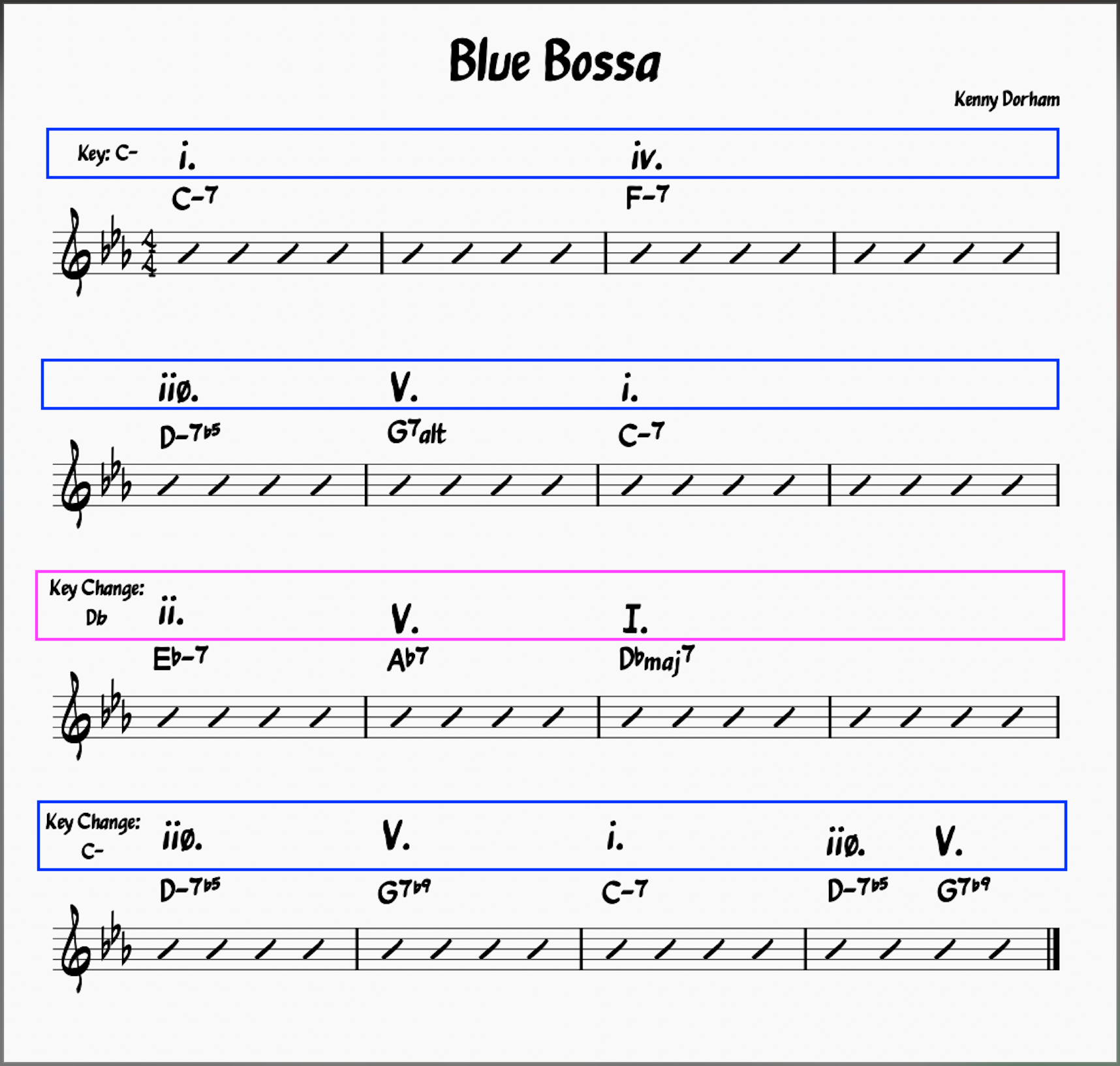
This tune has fairly straightforward harmony. The majority of “Blue Bossa” is in the key of C-, with a brief modulation to the key of Db major in the third system (measures 9-12). Let’s dig into the chords! You’ll notice I’ve included some guitar chord diagrams so you have options when voicing these chords.
Bars 1-4 of Blue Bossa With Guitar Chord Charts

The tune starts on the tonic C minor chord and moves to the IV chord (F-7) in the third and fourth measures.
Bars 5-8 of Blue Bossa With Guitar Chord Charts
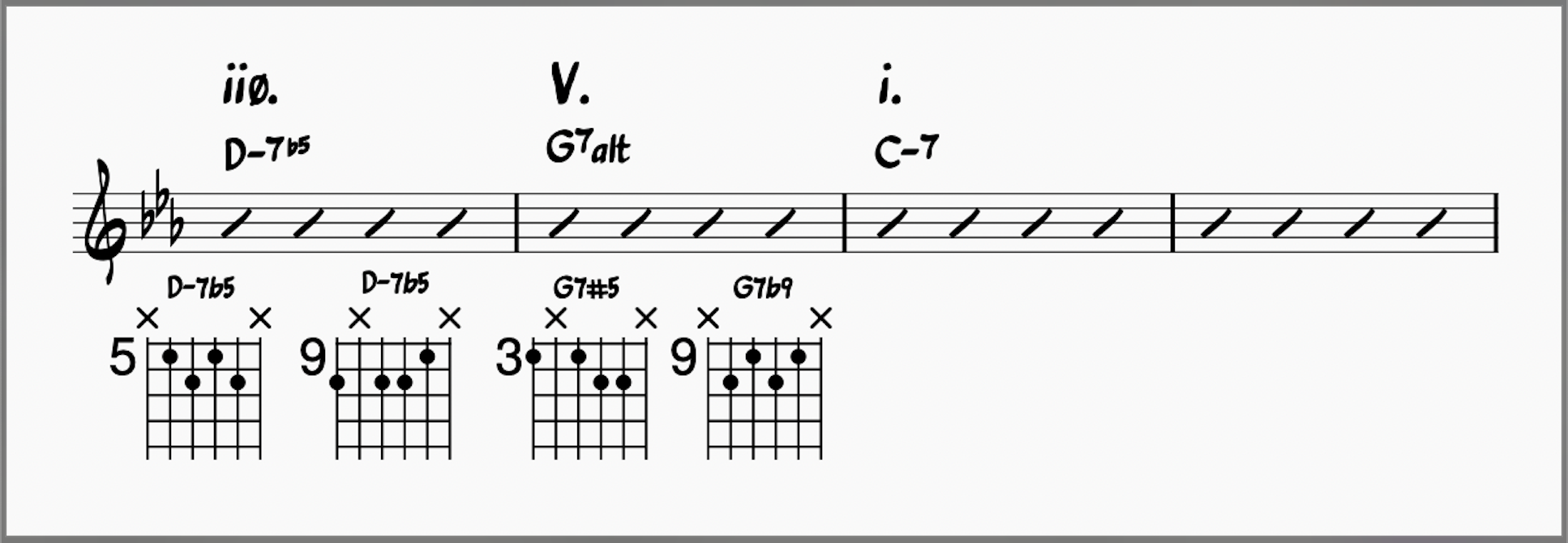
The second system is a classic four-measure minor iiø-V-i progression. The ii-V-I is the most common chord progression in jazz! If you are interested in learning jazz, then you’ll need to learn about major and minor ii-V-I progressions.
Check out this article to learn all about the ii-V-I progression.
Bars 9-12 of Blue Bossa With Guitar Chord Charts

Now, it’s time for the key change! In bars 9-12, we modulate to the key of Db major and play a four-measure ii-V-I resolving to Dbmaj7. This sets us up nicely for the last four measures of the tune because Dbmaj7 and D-7b5 share all the same notes except for the root.
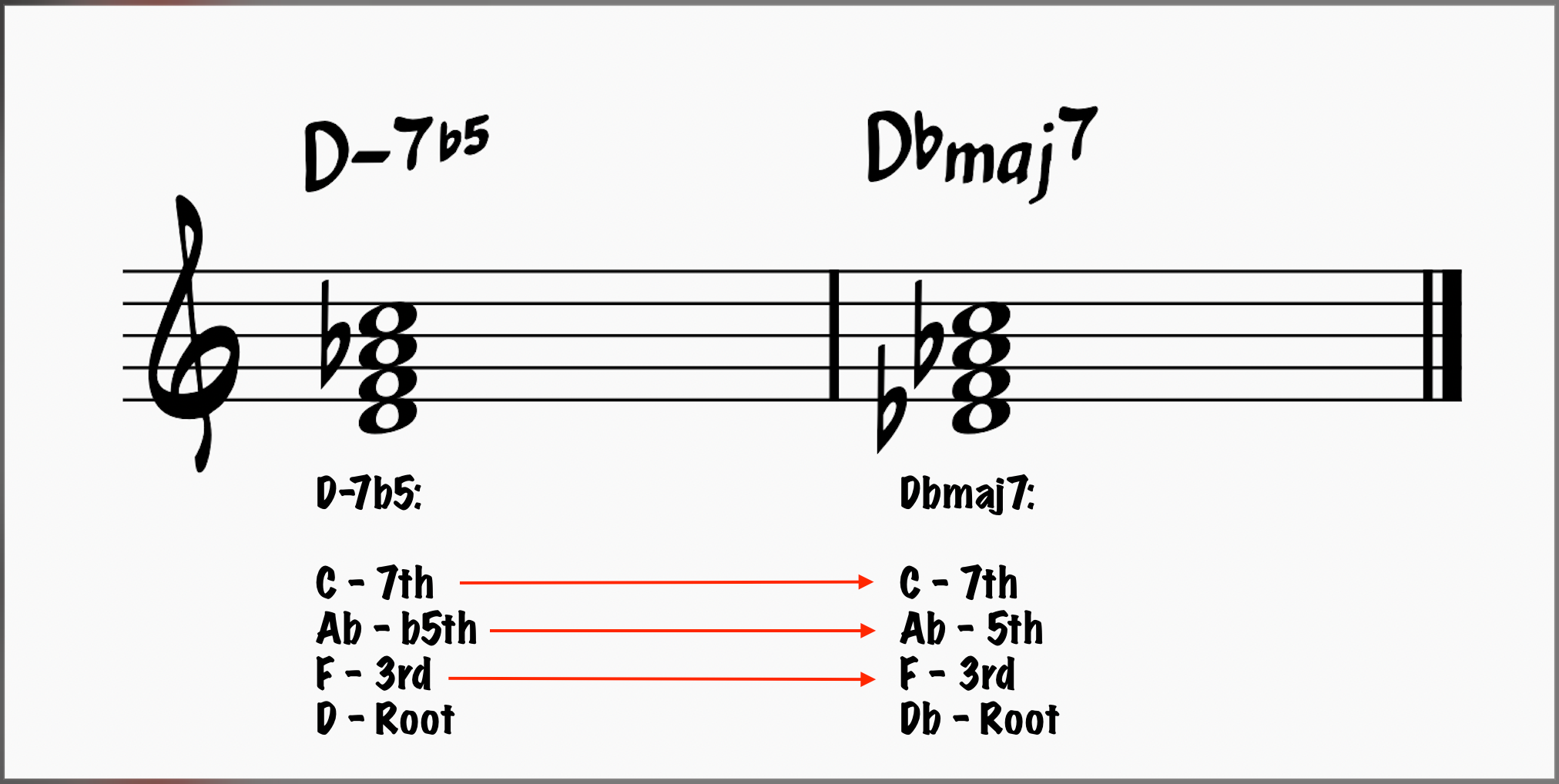
This gives us a smooth transition back to the key of C minor.
Bars 13-16 of Blue Bossa

Finally, the last four bars are nearly identical to bars five through eight. We have another minor iiø-V-i progression, with a quick minor iiø-V squeezed into the very last measure to set us up for the beginning of the tune.
With such a catchy theme and simple harmony, you’ll be playing over “Blue Bossa” in no time!
Want To Learn Other Jazz Standards? Join the Learn Jazz Standards Inner Circle!
The Learn Jazz Standards Inner Circle is a membership program designed for musicians who want a proven and precise way to learn jazz vocabulary and repertoire while improving their musicianship. If you are looking to take your jazz chops to the next level, then check out the Inner Circle!
Improve in 30 days or less. Join the Inner Circle.




